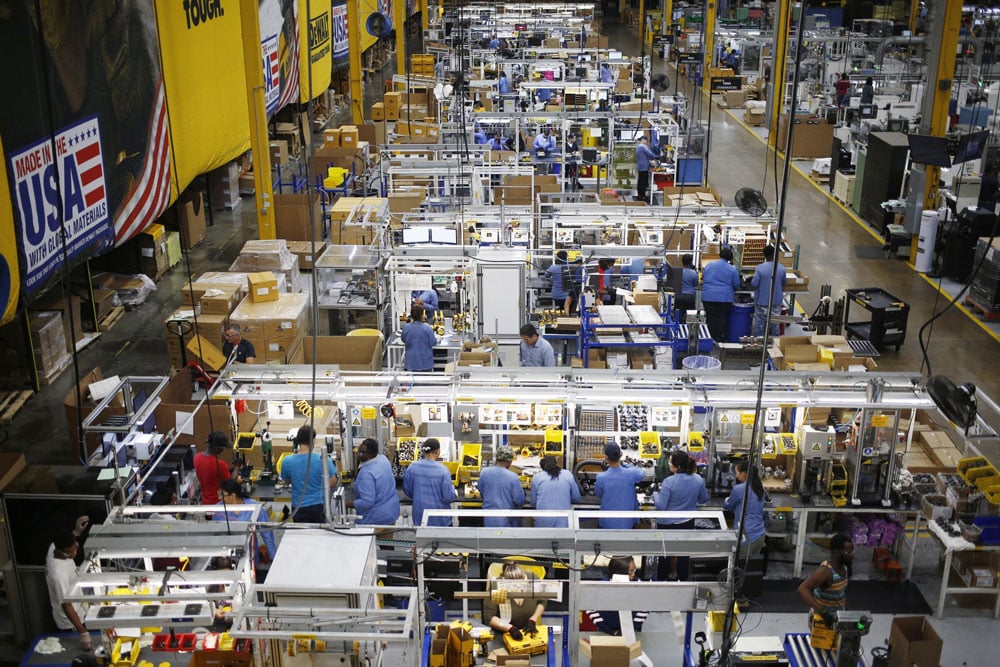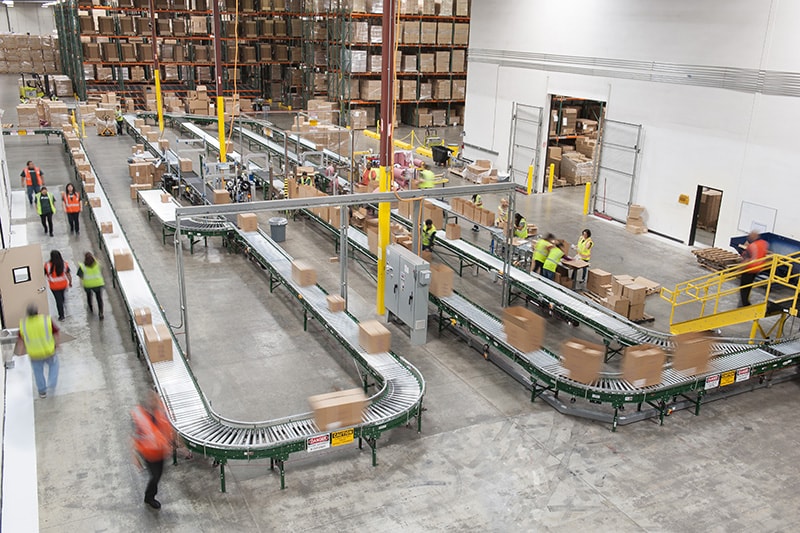“I just can’t keep people in the building longer than three or four weeks.”
Sound familiar? You’re not the only one. Retention is one of the biggest headaches in manufacturing today. But let’s cut to the chase: the real issue isn’t just long hours or tough work conditions—it’s the rigid schedules. Old-school practices and policies that don’t line up with what today’s workforce needs anymore.
The Employee Retention Crisis in Manufacturing
Retention issues in manufacturing have become a massive problem. The Bureau of Labor Statistics shows that turnover in the manufacturing industry is significantly higher than just about any other industry.
Why? Workers are burnt out from long hours, inflexible schedules, and zero control over their time. And this issue has only gotten worse with the younger workforce, especially Millennials and Gen Z. They want something different: more control, more balance. The traditional 40-hour week, plus forced overtime, isn’t cutting it anymore.
So what’s changed over the last 10 years? Today’s workers have options. It started with Uber & Lyft, then came dozens of other “gig” job offerings. Soon, nearly every industry realized they had to offer some type of flexible work schedule if they wanted to remain competitive. The bottom line…If you’re not offering flexibility, workers will find a place that does.
Daily absenteeism and high turnover are just symptoms. These are just signs that your traditional workforce model isn’t working. If you don’t fix the root issue, this revolving door is going to keep spinning.
The Link Between Flexibility and Retention
Manufacturing has been clinging to rigid work schedules forever, but times have changed, and so have the needs of your workforce. Employee retention is closely tied to how well companies can adapt to the changing demands of their workforce, and flexible schedules are becoming a key factor in keeping employees engaged and committed.
Flexibility isn’t just a “nice to have”—it’s essential. If you want to keep your people, you’ve got to adapt.
Why Flexibility Matters
Here’s the good news. Studies show that when workers have control over their schedules, they’re way more likely to stick around. Deloitte found that companies offering flexible schedules see up to a 78% jump in job satisfaction.
In manufacturing, flexibility can mean a lot of things. Whether its letting workers pick their shifts, offering part-time options, or just letting them adjust their schedule, the goal is simple: meet production needs without locking people into schedules that burn them out. The point is to create a system that meets production needs AND allows workers to balance their work and personal lives.
The Benefits of Flexible Scheduling
Flexible scheduling doesn’t just help your hourly workers. By implementing flexible scheduling, manufacturing companies can see improvements in productivity, employee satisfaction, and even safety. Here’s how flexible schedules can directly address the challenges of employee retention:
- Employee Loyalty and Retention
Workers stick around when they feel in control of their time. Flexible schedules show your workers you trust them, and that trust turns into commitment. Less turnover, fewer hiring costs, and a more loyal workforce—it’s a win across the board. - Increases Productivity
When people choose shifts that fit their lives, they show up ready to work. That means more focus, higher energy, and better productivity on the floor. - Improves Safety
Tired workers make mistakes—no surprise there. Most accidents happen near the end of 12-hour shifts or a 48-hour work week. Flexible schedules give your team the rest they need, lowering risks and keeping your operations safer. - Gives You a Recruiting Edge
The labor market is tight. Unemployment is at an all-time low, and there are often 100’s of entry-level jobs in other sectors all competing for the same talent. Offering flexible scheduling is a major draw for skilled and entry-level workers who want more control over their time. Companies that offer flexibility will have a competitive edge in attracting and retaining the best talent. - Reduce the Impact of Absenteeism
Building flexibility into your workforce model can improve your headcount and reduce the impact of daily absenteeism. How? Over-hiring. Instead of hiring 100 people and hoping they all show up, you hire 120 or 125. This ensures that you always have the headcount you need, even when people inevitably take time off. You’re building flexibility into your workforce model, and that’s what makes it sustainable. And it makes it possible to give people flexibility in the first place.
How to Implement Flexible Schedules in Manufacturing
We know why flexibility is important. Now let’s talk about how to make it happen. It’s not rocket science, but you’ll need a plan.
Step 1: Get Buy-in from Your Team
- Tie Flexibility to Production Goals – Let’s be honest, most companies prioritize one thing, production. The good news is, flexibility can help with that. Show them how a reliable, flexible workforce can actually improve productivity by reducing burnout, poor performance, and turnover. It’s all about making the case that a happy, stable workforce gets more done.
- Make Turnover Everyone’s Problem – You want everyone to care about retention? Then you need to make turnover their problem, too. If turnover affects bonuses, reviews, and production targets, you’ll see a quick shift in attitude. When retention is tied to everyone’s success, they’ll start working together to keep people around.
Flexible Schedules at GE Appliances
GE Appliances implements flexible work options through MyWorkChoice and achieves increased retention, tenure, and pro-active absenteeism management.
Step 2: Analyze Turnover & Absenteeism Data
Don’t trust overall percentages. It’s easy to say, “Turnover is 18%—that’s not terrible.” But that includes hourly and salaried employees lumped together. Break it down further. Look specifically at entry-level workers. Ask the tough questions: How many people have started this year, and how many are still here today? You might be looking at turnover rates of 500%. Yeah, that’s the number no one wants to talk about.
Get granular. Break it down by shift, by department, and by role.
- Where are your biggest issues?
- Is turnover higher in certain shifts?
- Is absenteeism spiking in particular departments?
- What about temp workers versus full-time employees?
You’ve got to dive deep into the details to understand where the problems really lie. This isn’t just about knowing that turnover is high—it’s about knowing exactly where and why so you can attack the problem at its root.
If you skip this step, you’re just shooting in the dark. You need real data to back up the decisions you’re making and to prove to everyone—HR, ops, leadership—why flexibility isn’t just a nice idea, it’s a necessity.
Step 3: Test Flexible Schedules in Entry-Level Roles
The next step is to incubate flexibility where it matters most—entry-level positions. Don’t try to change the whole company overnight. So, focus on entry-level roles, isolate it, and introduce flexibility. You won’t disrupt the entire organization, but you will target the area with the highest potential impact.
Take your existing job descriptions, but instead of the traditional 40-hour, mandatory schedule with limited time off, offer something different. Offer these jobs by highlighting the flexibility: the ability to take either full-time or part-time schedules, with the choice to take days off, or swap shifts. Create some half-shifts to bring in a whole different
demographic of worker (think, college students, semi-retirees, and stay-at-home parents). These small changes make a massive difference and make it possible to give full-time workers the little bit of extra time off they need.
Technology to Manage Schedules and Empower Workers
You need a system that allows workers to manage their schedules, swap shifts, and pick up extra hours. You can’t have HR or supervisors running this manually—it would be completely overwhelming and ineffective.
That’s where technology comes in. With tech that manages schedules like the MWC App, workers can drop or pick up shifts on their own, directly from their phone. No more calling supervisors or sending emails. It’s instant, it’s easy, and it’s all tracked. You’ll have a dashboard that shows who’s covering shifts, who’s available, and who’s called off. The beauty of this system is that it’s self-managed.
The goal here is to close the back door to your facility, where workers have been walking out and not coming back. By offering flexibility—whether it’s half-shifts, shift swapping, or even extra unpaid time off—you’re going to give them a reason to stay. When you let people manage their time without fear of being penalized, they won’t leave. This approach will reduce turnover and create a more committed workforce.
Step 4: Scaling & Over-Hiring for Success
Now that we’ve proven flexibility works at the entry level, it’s time to scale. You’ve learned what works: shift swapping, unpaid time off, bankable hours, and flexibility in scheduling. These are the tools that keep workers happy and reduce churn. Now, expand those same strategies to other areas of the workforce, especially those mid-level and full-time hourly workers who are just as hungry for flexibility.
Over-Hiring: The Key to Consistent Staffing
Here’s where things get really interesting: we’re not just talking about hiring the exact number of people you need. That’s the old model—thinking you need 100 workers, so you hire 100. But let’s be real, today’s workforce doesn’t show up every day, especially when you’ve got 15-20% absenteeism, which is pretty common in most places.
So what’s the answer? Over-hiring. Instead of hiring 100 people and hoping they all show up, you hire 120 or 125. This ensures that you always have the headcount you need, even when people inevitably take time off. You’re building flexibility into your workforce model, and that’s what makes it sustainable.
“So, you’re telling me to over hire?” Absolutely. The goal isn’t to have 125 people on the floor every day—it’s to ensure you’ve got 100 there when you need them. Over-hiring compensates for the real-world factors that lead to absenteeism. And it makes it possible to give people flexibility in the first place. Otherwise, you’re just letting workers take more time off with nobody to replace them.
Long-Term Impact: A Stable, Engaged Workforce
So, what happens when you scale flexibility across your workforce and over-hire to cover absenteeism? You get consistency. You’ve built a workforce that’s reliable because they have the freedom to manage their time and the security of knowing they have a job to come back to. They aren’t going to walk out the back door because they’ve got the flexibility they need. And you’ve got the headcount levels you need to hit production goals.
This isn’t just about putting out fires. This is about creating a long-term solution to the turnover problem that’s been plaguing companies for years. You’re building a more stable, engaged workforce by giving them the tools to succeed, and by planning for the reality of absenteeism and peaks in production.
Flexibility Isn’t Optional Anymore—It’s Essential
Look, flexibility isn’t some “nice-to-have” perk anymore. If you want to keep your workforce engaged, productive, and sticking around, you’ve got to offer it. The old way of doing things—rigid schedules, hiring a set number of people, and hoping they all show up—it doesn’t fly in today’s world.
“Workers today want flexibility, and the companies that get on board are the ones that will keep their best people.”
That’s just the reality. At MyWorkChoice, we’ve been building flexible workforce models for over 8 years. We’ve seen what works, and we know how to make it happen for you.
Ready to make the shift?
Want help figuring out how to bring flexible schedules to your facility? I’ll walk you through how to introduce flexibility, how to get your line supervisors on board, and what to focus on first. Schedule a Call.








Share